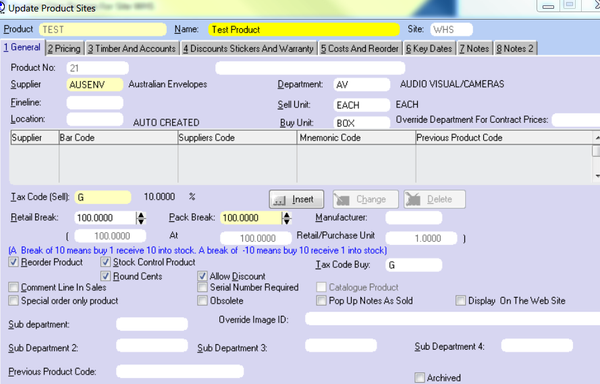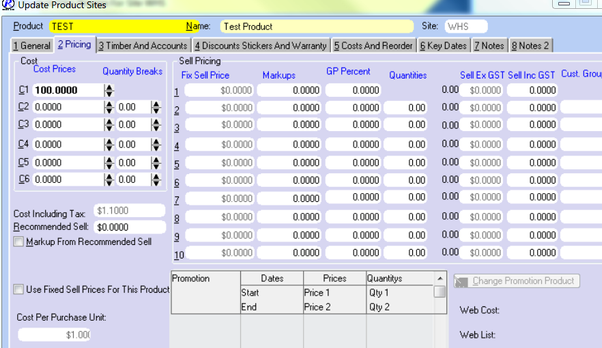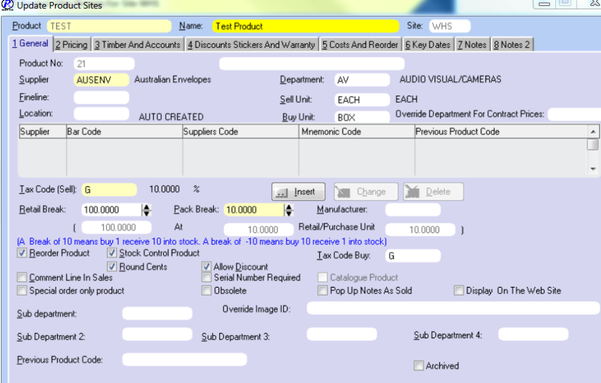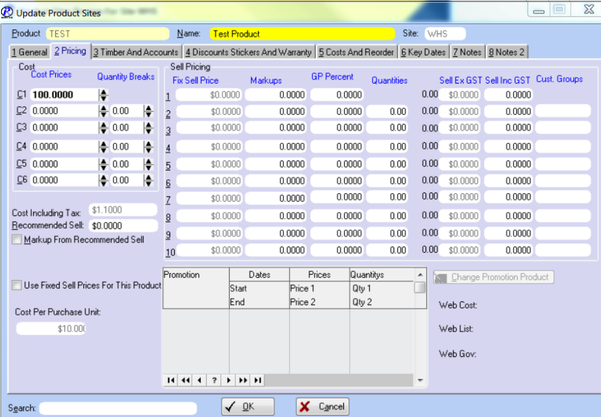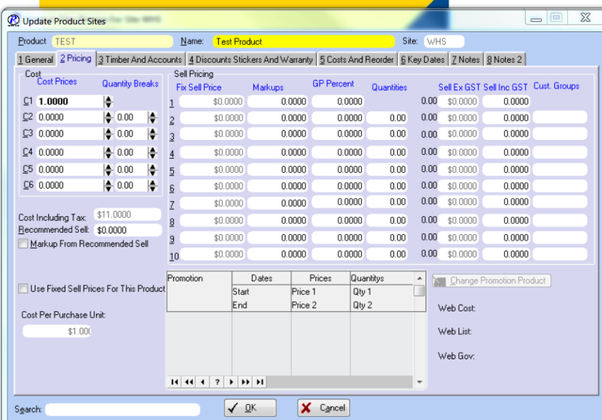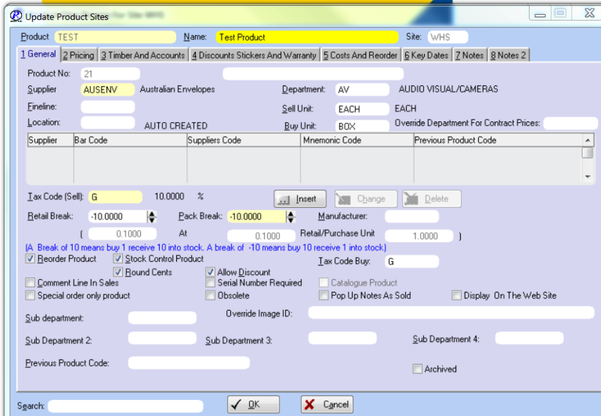Catalogue cost change tracking
There is an increasing need to be able to track the changes to costs caused by catalogues,
to set your own sell prices for products and to buy products in different units to that
suggested by the catalogues. Readysell has made some changes to the system to help in this area:-
- We have created a new report to better track changes to cost caused by catalogues,
- We have allowed for the cost on products to be quoted in a different unit to the unit you actually stock it in.
- We have also allowed for products to be purchased in a different unit to the unit the product is stocked in. In which case both the cost on the purchase order and the quantity received into stock are adjusted.
Report = CATALOGUE TO PRODUCT FILE COMPARISON DETAILED
Product stocked in a unit different to the unit on the catalogue
Each product has a retail break and a pack break.
In general :-
The retail break is the ratio between the unit the cost p1 is quoted in and the unit products are stocked in.
The pack break is the ratio between the unit the product is purchased in and the unit products are stocked in.
For some products the cost price is quoted in a different unit to the unit it is stocked in. In that case we use retail break.
For example if the cost is quoted per box of 100 but the product is stocked and sold by each unit the retail break should be 100. As shown in the example below.
costp1 retail break Calculated cost on product.
$100 100 $ 1 (costp1 /retail break)
Normally products are purchased in the same unit as that used in the cost calculation above. In which case pack break is the same as retail break. In which case : - the cost on the purchase orders is the calculated cost for the product
- when the purchase order is received for every 1 received 100 will go into stock.
costp1 retail break pack break Calculated cost per stock unit.
$100 100 100 $1
In some cases the product is purchased in a different unit to the unit used to quote costs.
For example the catalogue quotes the cost of a product per box of 100. You sell the product by the each but you buy the product by pack of 10 from a wholesaler. In which case - the cost on purchase orders is the calculated cost for the product times 10, - when the purchase order is received for every 1 received 10 will go into stock.
costp1 retail break Calculated cost on product. pack break Cost on purchase order
$100 100 $1 10 $10
If the cost of a product is quoted in a unit smaller than the unit used to stock and sell the product, retail break can be set to negative. In which case:- - the cost on the product is the costp1 times 10,
- the cost on purchase orders is the calculated cost for the product times 10,
- when the purchase order is received for every 10 received 1 will go into stock.
As per example below.
costp1 retail break pack break Calculated cost per stock unit.
$1 -10 -10 $10
, multiple selections available,
